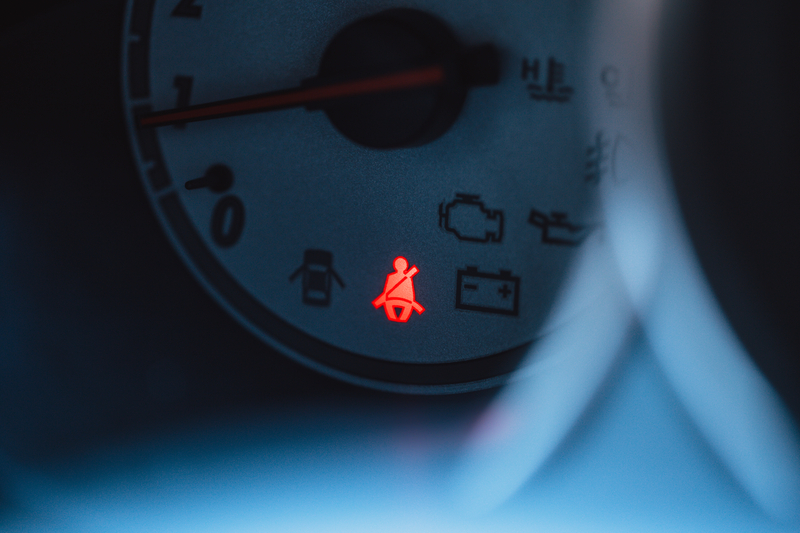
In October, the US Department of Transportation’s Federal Highway Administration (FHWA) gave the green light for funding applications to deploy Vehicle to Everything (V2X) technology. The $40 million Saving Lives with Connectivity: Accelerating V2X Deployment grant opportunity is to advance connected and interoperable vehicle technologies, allowing vehicles to communicate with one another and with road infrastructure. A V2X Deployment Plan is set to be completed in early 2024.
Speaking to ITS International, FHWA administrator Shailen Bhatt outlined his thoughts on the future. He was FHWA's associate administrator for highway policy and external affairs under Barack Obama, and left Aecom to take up the top job at FHWA in January this year.
The desire for greater road safety has been ever-present in his career at the Kentucky, Delaware, and Colorado Departments of Transportation and as CEO of ITS America. Bhatt has charisma, drive, bags of experience – and is passionate about saving lives. And yet, in 2021, 43,000 people died on US roadways. With that grim backdrop, is he optimistic that technologies such as V2X will eventually make a difference?
“It’s like anybody, you have good days you have bad days,” Bhatt admits. “I would say that I am naturally an optimist. So I think I'm of two minds on your question. I mean, quite frankly I'm sick to death of talking about safety. My entire career in transportation, we've talked about getting towards zero deaths - and if we could save people's lives with just the words that we have used, we'd be bringing people back to life on American roadways.”
So he is driven by “action and optimism”, he says. “I am optimistic that my daughters - who are eight and 10 now - in their lifetime, will look back almost like we look back on diseases like polio [and think], ‘oh, you know, Americans used to die from that’. It's going to take a lot of hard work and leadership. I am optimistic that we will very soon get there - but it can't be just the things we've always tried to do: it's got to be the Safe System Approach, and technology, for me, is critical path to getting there.”
What is the Safe System Approach?
The Safe System Approach has been adopted in USDoT’s National Roadway Safety Strategy to address US road deaths: in essence, it seeks to prioritise the elimination of crashes that result in death and serious injuries, while acknowledging that humans make mistakes. In order to mitigate those mistakes, you have to design transportation systems with that vulnerability in mind. Crucially, responsibility for this is shared between everyone - government, automotive OEMs, safety advocates, researchers and the general public – and the concept of safety must be proactive rather than reactive.
FHWA believes V2X can be a key component. “Obviously, saving lives, it's our most important role,” says Bhatt. “And so we want to save lives with connectivity by accelerating V2X deployment. You've been covering this for a long time. We're hoping to move the needle on connectivity. We’ve talked at a high level for a long time. We've had good deployments that are out there, but we're hoping to really spur the needle in the face of 43,000 deaths on American roadways.”

$40 million is a big chunk of cash, but is it really enough to do this? “$40m is a lot of money and if you deploy it properly, I think it will move the needle,” says Bhatt. “Is it going to get us to ubiquitous connectivity everywhere across the nation? Absolutely not. But what we're trying to do is [to] pick a couple of places can concentrate the deployment, hopefully get some more private sector support to jump on as well. And then the outcome that I'm hoping for is that, in one or two places, we get to really great deployments and case studies; people start to see data of crashes coming down, fatalities coming down, congestion and GHG [greenhouse gas] emissions coming down. And then, imitation is the most sincere form of flattery: other city leaders will be, like: ‘Wow, that's amazing. We should do that here as well’.”
“We celebrate the automobile in the US, but we don't have as many cultural references to the 43,000 deaths that occur every year because of it”
So much for the money available – what about the technology itself? The US Federal Communications Commission’s decision in April to grant a joint waiver request to deploy cellular Vehicle to Everything (C-V2X) technology in the upper 20 MHz part of the 5.9 GHz band paved the way for roll-out. But is that enough spectrum to make V2X work?
“These things are never moving forward as cleanly or as easily as we would hope,” Bhatt says carefully. He references an earlier attempt to create connectivity - the SPaT Challenge – which tasked US state and local public sector transportation infrastructure owners and operators to cooperate together to achieve deployment of DSRC infrastructure.
“That was all about DSRC,” he says. “Now, we've got C-V2X, we've got less of the spectrum to work with. We have the spectrum that we have. But what's important here – and again, this is my focus - is if we can deploy, and show some use cases that are moving the needle, that could then force a conversation if we have deployments that require more: ‘Here's our evidence and our data around our deployment, for why we need more spectrum for safety’.”
Road deaths make US an outlier
There is no doubt that something is needed. While 43,000 road deaths is a large number, what’s really shocking is the extent to which this figure makes the US an outlier among developed nations. Research from the US Centers for Disease Control and Prevention (CDC) found that, in 2019, the US had the highest population-based death rate on the roads (11.1 per 100,000 people) of high-income countries. In fact, the US rate was 2.3 times higher than the average rate for 28 other nations (4.8 per 100,000). US road deaths also increased in 2020 and 2021.
“I would say part of our challenge is that we have 100 years of land use in this country that is - particularly post-World War Two – prioritised around the automobile,” Bhatt suggests. “And it's great, and it contributes to that very American ethos and culture going back to the Beach Boys singing: ‘Round, round, get around, I get around’. But there was another band at that time called Jan & Dean and they had a hit song called Dead Man’s Curve. And so, we celebrate the automobile in the US, but we don't have as many cultural references to the 43,000 deaths that occur every year because of it.”

Part of the problem, perhaps, is that humans tend to dwell on the possibility of an unlikely but spectacular danger - such as a shark attack or lightning strike - rather than the obvious one of being killed in an automobile collision. “You've got a much greater chance of dying in a car crash than you do of being eaten by a shark,” Bhatt agrees. “But what probably weighs more on people's minds when they're driving to the beach is the shark that might be in the water - not the drunk, distracted drowsy driver that might be on the road there. Everybody thinks that they're the perfect driver and that it won't happen to them. We’re never going to shake that belief, so we just want to provide as much safety as possible in the system.”
“While the automobile was a great example of 20th century technology, there's 21st century technology that can provide safety for us”
To that end, for the last couple of years, USDoT has been trying to “shift the arc”, he says. “The automobile is a celebrated part of our culture. But we also need to celebrate pedestrians, cyclists, transit; we have to look at the data around vulnerable road users. And I think that's what we're trying to shift the narrative on - and deploying technology at scale. Because while the automobile was a great example of 20th century technology, there's 21st century technology that can both distract us but also provide safety for us.”
FHWA has responsibility for infrastructure, so is not going to be able to do this on its own. “There's lots of other entities around connectivity, automobiles and others,” Bhatt says. “What we're trying to do is provide leadership and confirmation for people that this is still very important. This is a marathon, not a sprint.”
Bhatt is pragmatic when it comes to whether the stars are aligning, with technology providers and OEMs getting together. “I think it comes together and then, you know, slightly deviates, and then it’ll come back together,” he asserts. “Every technology has moved in fits and starts. Certainly if you look at the history of automobile safety, seatbelts used to be controversial but it's unequivocal that they save lives.”
How could V2X be a game-changer?
In much the same way, airbags, advanced driver assistance systems and child safety seats have all been steps on the way to making cars safer to drive. “So we always hope that we get there, but what did Winston Churchill say? ‘I have great faith the Americans will eventually do the right thing once they've exhausted every other option.’” Bhatt smiles: “I’ve probably paraphrased that a little bit – but we’ve tried a bunch of things. We're still at 43,000. This is another thing for us to try.”
“This is not some pie in the sky, ethereal idea: there's data, there's research”
He does not think people are resisting the march of C-V2X but he does see an appetite for results. “I don't think I sense resistance,” he explains. “I think I sense ‘show me!’ That was the whole point of the V2I Deployment Coalition - we were going to go out and deploy, and we have deployed. But I think another factor here is China, which is moving forward quite aggressively on V2X. And in the US, the president has been quite clear that he wants us to be leaders in this space. So, for me, this is not some pie in the sky, ethereal idea: there's data, there's research and so just like we eventually got there with seatbelts, I think we'll eventually get there with connectivity. In what form, I don’t know: we thought it was DSRC, now it's C-V2X. The technology evolves, but the premise of connectivity leading to safety - I am just unshakable in that belief.”
You sense that Bhatt would not have taken the FHWA job unless he thought he could make a difference, and he certainly sees V2X as a potential game-changer. “Yes, absolutely,” he concludes. “If I didn't, I wouldn't have been such an evangelist for it throughout my career. It's another layer of safety. And again, I'm just very optimistic that that, whether it's now or in the near future, we'll start to bend the needle towards zero, and technology will be a critical component of that.”











